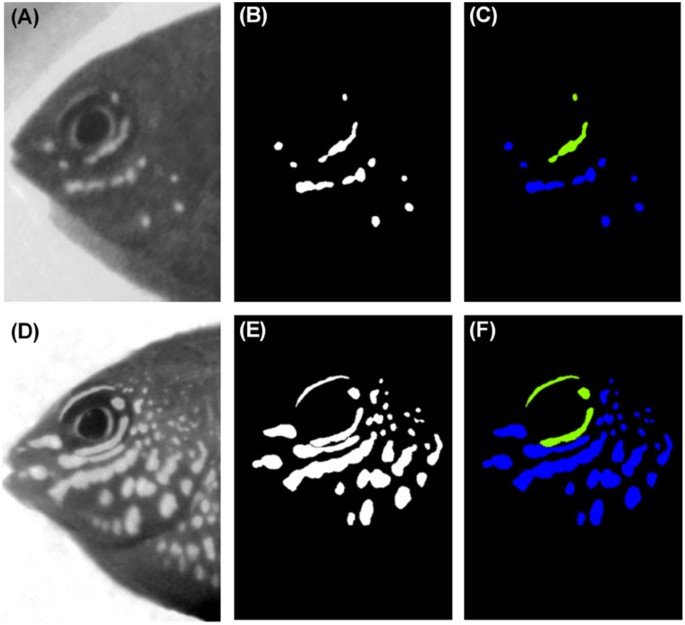
Research Project
Unravelling the Secret Communication of Coral Reef Fish
For my Master by Research I am conducting a study which delves into the ecology, evolution and behaviour of reef-associated fishes. On this page you can find further detail on the surrounding topic of my research, from Ultraviolet (UV) radiation to the selected families of fish I have chosen to investigate.
Intro
Inspiration for my Research
When deciding to undertake a Masters at RHUL in the Lab of Dr Portugal, I was reading a very interesting research paper by Dr U Siebeck of the University of Queensland (UQ), Australia. Siebeck's (2013) research focused on investigating UV signalling in marine fish species to elucidate its underlying processes and multifaceted functions. Of particular interest was her study titled 'A Species of Reef Fish that Uses Ultraviolet Patterns for Covert Face Recognition,' which explores the role of UV reflectance in individual identification and recognition among Damselfish (Siebeck, 2013)."
The research conducted by Dr. Siebeck and colleagues at the Marine Sensory Ecology Group of UQ prompted my exploration into the broader utilisation of UV signals by reef-associated fishes. Collaborating with Dr. Portugal, we devised a research project to examine the potential influence of key life history parameters on the presence of UV markings within the studied species, aiming to assess their predictive strength in the context of UV signalling."



Figure 1: The above images show intravariation in UV facial patterns/markings of individuals of Pomacentrus sp (Damselfish). The black and white photos have been converted to binarized (thresholded) images to make assessing the distinct differences in UV facial patterns easier.
What is Communication?
In the context of animal behaviour, communication refers to the transfer of information between individuals of the same species (conspecifics) or sometimes between different species (heterospecifics). Animals use various behaviours (signals, states) to convey information to each other, serving important functions such as mating, parenting, foraging, defending territory, and avoiding predators. This transfer of information can be sent intentionally or unintentionally, and can also be interpreted by an unintended receiver. This process is known as eavesdropping. Overall, communication plays a crucial role in facilitating various aspects of social interaction, survival, and reproduction within animal populations.
What is UV?
UV stands for ultraviolet, which is a form of electromagnetic radiation with shorter wavelengths (100-400nm) and higher energy than visible light (400-800nm) (see Fig 1). UV radiation is not visible to the human eye, as our lens filters this wavelength out, and we lack UV visual pigments.
Figure 1: Selected Range of the Electromagnetic Spectrum (EMS). UV-A range, which select adapted reef fish visually perceive in, is highlighted by a dotted rectangle. (Britannica, 2018)
The Coral Reef
A diverse and dynamic marine ecosystem composed of calcium carbonate structures, formed by colonies of tiny animals called coral polyps. Coral reefs are found in shallow, clear, tropical waters and are known for their vibrant colours, intricate formations, and high levels of biodiversity. Coral reefs are often referred to as the “rainforests “ of the sea, owing to their support of 25% of all known marine life, while providing extensive ecosystem services globally (Sheppard, et al., 2017).
